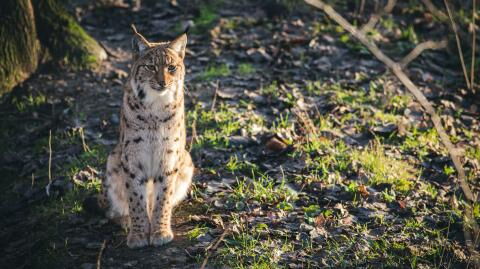‘As crafty as a monkey’ is an expression that can now best be illustrated by babies as well! In a study published last week in the Animal Cognition scientific journal, an international team of researchers revealed a fascinating discovery. Babies use gestures that are almost identical to those of great apes to communicate. More specifically, babies share more than 95% of the gestures other primates use!
Discover our latest podcast
Over a little more than two decades researchers managed to build a kind of ‘Great Ape Dictionary’ that has more than 80 gestures in it. This long-term work lacked an important element however, Man. The lead author of this new study, Catherine Hobaiter from the University Department of Psychology and Neuroscience at the Scottish University St Andrews noticed this absence.
‘Wild chimpanzees, gorillas, bonobos, and orangutans all use gestures to convey their daily demands, but until now there was still a great ape missing from the board, us,’ she said in a statement.
Babies’ gestures scrutinised in detail
To remedy this the specialist, supported by colleagues from the University of Neuchâtel in Switzerland, as well as the Universities of Göttingen and Hamburg in Germany, began to study babies’ gestures in detail.
To do this, scientists implemented the same observation protocols as those used to establish the ‘Great Ape Dictionary,’ as pointed out by Catherine Hobaiter. ‘We used exactly the same approach to study young chimpanzees and children, which is logical; kids are just little monkeys.
The principle used to observe and compare the two species was therefore the same, observing each of the two groups in their ‘natural environment,’ such as the Budongo Forest in Uganda for chimpanzees and nurseries, day cares and other domestic environments for humans. At the end of this observation phase, the researchers were surprised to discover the extent of the similarities between babies and chimpanzees.
Common gestures
‘We knew we would find some of the same gestures, such as reaching out to ask for something or raising a hand, but we were stunned to see so many “ape gestures” used by children,’ says Catherine Hobaiter. And like monkeys, the children also combine their gestures to make various requests.
Despite an incredible similarity between human babies and chimpanzees, the scientists noted some differences. For example, using the finger for pointing and waving to say "hello" or "goodbye" sees to be the prerogative of Homo sapiens. It would seem that we have preserved a good part of our ‘animal' heritage, despite the appearance of spoken language in humans.
It is precisely this fact that the researchers wanted above all to establish, as the first author of the works Verena Kersken from the University of Göttingen points out. ‘Since chimpanzees and humans shared a common ancestor about 5 to 6 million years ago, we wanted to know if our evolutionary history of communication was also reflected in human development.’ ‘As crafty as a monkey’ is thus an ancestral capacity that manifests itself from an early age even today!















